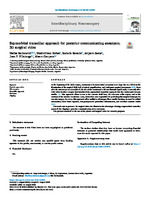Resumen:
At the beginning of the 20th century, craniotomies for intracranial aneurysms were large due to a deficit in the illumination of the surgical field, lack of optical magnification, and inadequate surgical instruments. Even after the microscope was introduced, the size of the craniotomies did not diminish significantly. It was only after 1981 when Sanchez-Vazquez first introduced the supraorbital transciliar approach that the craniotomies become smaller]. This approach allows access to the anterior skull base, the selar-para sellar region, and to the territory of the anterior circulation. Later, Perneczky1 was responsible for perfecting this surgical technique for vascular surgery. In a way, this approach offers multiples advantages like a smaller incision, no need for orbital osteotomies, fewer brain exposure, less postoperative periorbital inflammation, and excellent cosmetic results.
Our work aims to present a 3D surgical video that illustrates the advantages of using a supraorbital transciliar approach for clipping a posterior communicating artery aneurysm.
The patient consented to the use of the photos and surgical video for research purposes.
Descripción:
Fil: Nuñez, M. Department of Neurosurgery, El Cruce Hospital, Buenos Aires; Argentina

